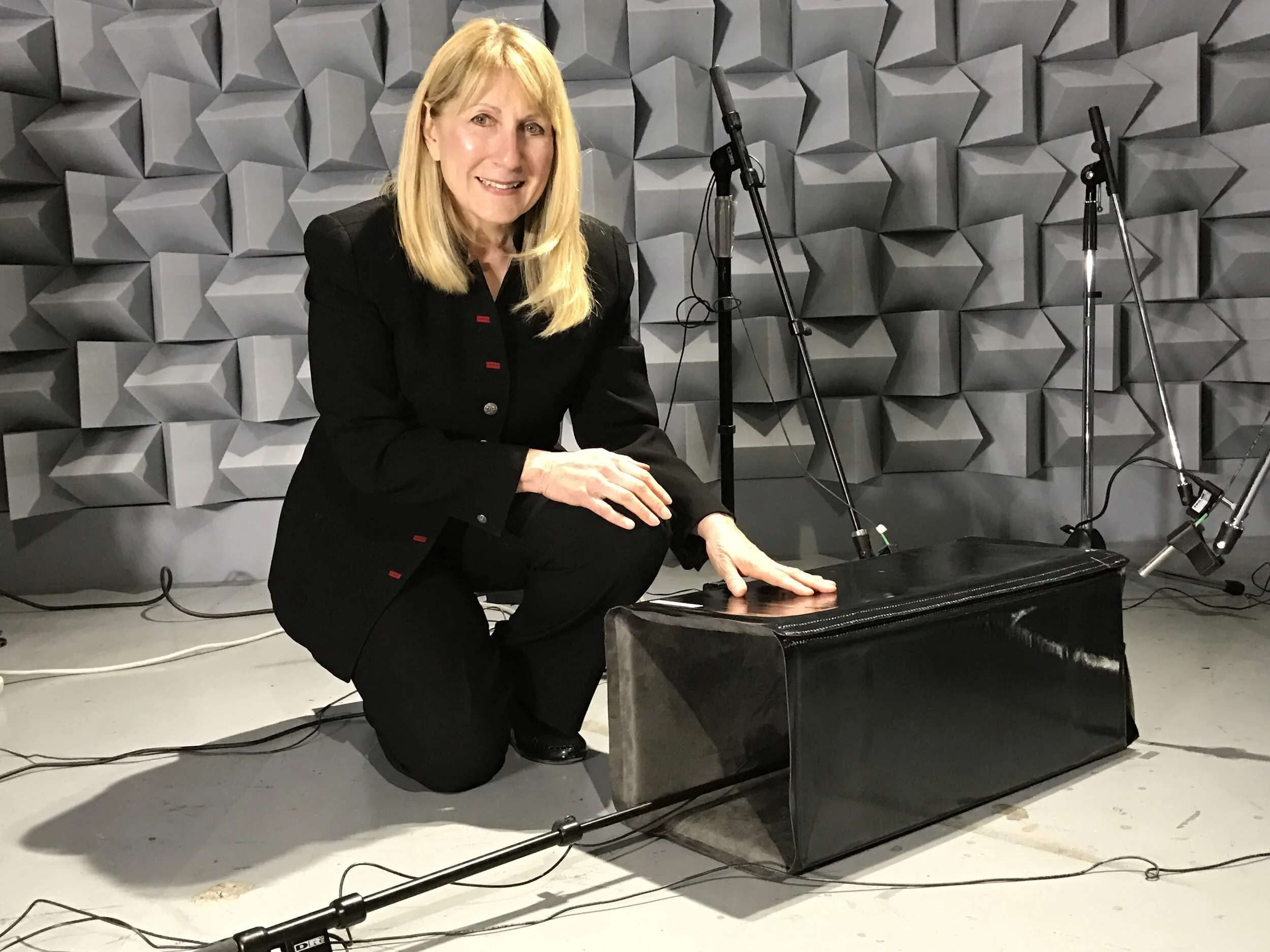
For Canines and Felines of All Ages
The Pet Acoustics Home Pet Hearing Test is an easy, hands-on way to observe and record if your pet has full hearing or may have partial hearing or hearing loss.
We’ve simplified the science of pet hearing into key ranges; high, mid, and low frequency hearing. This natural method includes animal vocalizations that are familiar to your pet.
After conducting the test, you will know better if your pet hears all three levels or may have hearing loss. You will be emailed a copy of your pet’s test results for your records. You are encouraged to confirm your pet’s test results with your veterinarian.
What People Are Saying
“This was fun to do and great to know that my dog has hearing health.”
“I was amazed to see how my cat’s ears moved in so many directions during the test. The results confirmed 100% hearing!”
“My senior’s result shows high frequency hearing loss. I’ll be making an appointment with my vet.”

Natural Sounds for a Natural Method
Embedded in the pet hearing test are three levels of frequencies, above and below human hearing, that will naturally elicit a response in your pet.
High frequency sounds (Bats, Crickets)
Mid frequency sounds (Monkey, Crow)
Low frequency sounds (Pig, Frog)
The hearing diagram shows just how much higher frequencies that dogs and cats can discern. Our pets depend on their acute hearing ability all throughout their lives, which is why it is important to know what the status of their hearing is for their well-being.
Hearing Range in Frequency (Hz)
Take a Closer Look
International Animal Health Journal reports on the Home Pet Hearing Test.
How to Measure Your Pet’s Responses
Choose a Calm Space
Select a quiet space where your dog or cat is calm. Position the audio source a few feet from your pet with the volume at a comfortable level.
Observe for These Reactions
Your pet’s physical response may be subtle or distinct, and should be observable right away as you play each audio testing sound. Here are which reactions to look out for:
-
Ear movement, head movement, head turns, alert body posture, curiosity, head tilt, one ear back, two ears forward or back, startle, confusion, leaves the space, or no physical response
-
Ear movement, head movement, head turns toward the sound, alert body posture, curiosity, one ear back, two ears forward or back, startle, leaves the space, or no physical response.
After completing the test, you will be emailed a copy of your pet’s test results for your records. You are encouraged to confirm your pet’s test results with your veterinarian.

What Do the Results Mean?
After completing the test, please refer to your email for the results of your pet hearing test.
My pet responded to all three audio tests
Your pet has good hearing health.
My pet responded to one or two audio tests
This can mean partial hearing loss. Please note, senior dogs and cats are more common to see diminished high frequency hearing.
My pet did not respond
No response to the audio tests can mean hearing loss, and a consultation with your veterinarian should follow. Please try the test again in a few days to see if the same results repeat.
How Age Relates to the Test
Senior dogs
As dog’s age it is very common for a senior to lose some of their high frequency hearing due to degenerative changes in the nerves found inside the ear. It’s also common for a senior dog to lose hearing in one of his ears first. Observe which ear. It is common among dogs to hide physical vulnerabilities or show pain, which is an instinct deriving from pack survival. Over time, a dog will increasingly rely upon his sight and smell, to compensate for any hearing loss.
Puppies
Puppies hear after three weeks of age. - If you are testing a puppy’s hearing ability and the puppy doesn’t show excitement or any observable behavioral response to the sounds this might be a sign of deafness. A follow up visit with your veterinarian should be scheduled. Please retest your puppy a few times for comparative results.
Senior Cats
As cat’s age it is very common for a senior to have hearing loss as a combination of nerve damage and the gradual fusing together of the tiny bones in the cat's inner ear. The cat may lose hearing in only one ear or in both, depending upon the causes of the hearing loss.
Kittens
Kittens hear around five days old when their ears unfold. If you are testing a kitten's hearing ability and the kitten doesn’t show excited or any observable behavioral response to the audio testing sounds this could be a sign of deafness. Some cats are born partially or completely deaf because of a genetic defect; this is called congenital deafness. In most cases of congenital deafness, the deafness is pigment related, and most of these cats have an all-white or mostly white haircoat. A follow up visit with your veterinarian should be scheduled.
The information available on this website, including text, graphics, images and information, contained on or available through this website, is general in nature; it is not intended as medical advice or a substitute for obtaining veterinary advice. Pet Acoustics makes no representation and assumes no responsibility for the accuracy of information contained on, or available through this website, or its suitability for any purpose, and such information is subject to change without notice. You are encouraged to confirm any medical condition or treatment for your pet with your veterinarian that you may have discovered as a result of the information on this website.
Discover More in the Blog
Articles and scientific studies on the sound behavior for dogs, cats, horses and birds.














